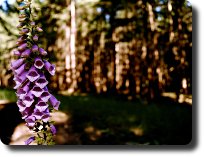Here are some snapshots of the web interface (new versions
of MArch may look slightly different):
![[search screenshot]](thumbnail/search.png)
| The search results page. |
![[search screenshot w/legenda]](thumbnail/search-desc.png)
| The hot-spots show:
-
Query entries with constraints on sender, recipient,
subject, month, and category. The list order can be by
date, subject, or sender. By default the search page
shows today's messages, but you can choose another day,
month or week.
-
Menu bar that appears on every page. This includes some
shortcuts to get to the list of all messages of this
month/week/day and the one before.
-
A navigation bar to move back and forth days/weeks/months.
Below is the list of messages satisfying the query. |
![[results bottom screenshot]](thumbnail/results-bottom.png)
| The bottom of the search results
page.
|
![[results bottom screenshot]](thumbnail/results-bottom-desc.png)
| The hot-spots show:
-
Smile icon, when message is in the ham category (not
spam).
-
Devil icon, when message is in the spam category.
-
Balloon icon, when message is neither in the spam
nor in the ham category. That is, the Bayesian
filter was unsure about the quality of the message
contents.
-
Outgoing icon, when message has been leaving the
domain.
-
Incoming icon, when message has been entering the
domain.
-
Number of messages satisfying the search query.
|
![[ham sample screenshot]](thumbnail/ham-top.png)
|
The top of a message page displaying a non-spam
message.
|
![[ham sample screenshot]](thumbnail/ham-top-desc.png)
| The hot-spots show:
-
Navigation bar to quickly jump to the most used pages.
-
Some summary data, including information from the
message headers (sender, subject, receiver, date), the
internal MArch ID, the list of categories it belongs to
and the spam score (normally not shown).
The rest is the message body.
|
![[ham bottom screenshot]](thumbnail/ham-bottom.png)
| The bottom of a message page
displaying a non-spam message. |
![[ham bottom screenshot]](thumbnail/ham-bottom-desc.png)
| The hot-spots show:
-
Thumb down button to change the rank of the message to
spam.
-
Magnifying lens button to get to the raw message
(including headers).
-
Input box to forward the message to someone.
-
Current position in the discussion thread.
In the blue box you see the discussion thread.
|
![[unsure sample screenshot]](thumbnail/unsure.png)
|
A non-spam message which the Bayesian filter hasn't
been able to asses with certainty.
|
![[unsure spam screenshot]](thumbnail/unsure-spam.png)
| A spam message which the Bayesian filter hasn't
been able to asses with certainty.
|
![[general statistics screenshot]](thumbnail/stat-gen.png)
|
Statistics page about some general facts of the database
and the type of traffic sen by MArch since it was
started.
|
![[hourly statistics screenshot]](thumbnail/stat-hour.png)
| Today's statistics of the
database contents, divided per hour. Included is a
line chart of the frequencies per hour and a pie
chart of the overall contents divided per ham
(green), spam (red), unsure (grey).
|
![[daily statistics screenshot]](thumbnail/stat-day.png)
|
Statistics for the current month,
divided per day. Included is a line chart of the
frequencies per day and a pie chart of the overall
contents divided per ham (green), spam (red), unsure
(gray).
|
![[spam statistics screenshot]](thumbnail/stat-spam.png)
|
Two tables showing the top keywords (features) currently
stored in the Bayesian table. The one on the left is the
list of keywords with the highest spam rank. The one on
the right is the list of most frequent keywords. On the
top you see some figures regarding the overall spam table
and the cache used by MArch to speed up their access.
|
MArch has been developed and tested on FreeBSD running
CMUCL. It should be rather portable, though.
All the photographs on these pages are copyright Walter
C. Pelissero. All rights are reserved. No copy, manipulation or
transfer, beside for the sake of personal view of the page where
they appear on, is allowed. Also the direct linking of web pages to
the single photograph image is forbidden.


 Copyright © Walter C. Pelissero, all rights reserved
Copyright © Walter C. Pelissero, all rights reserved